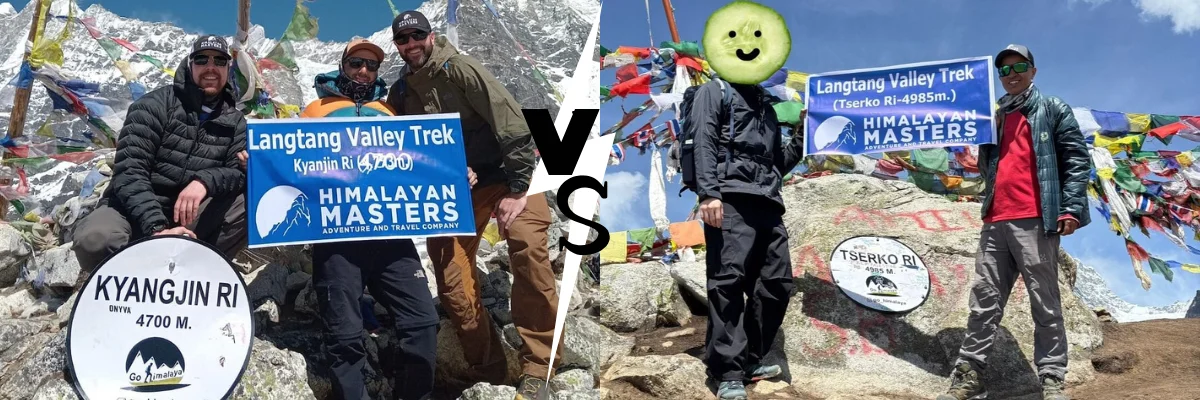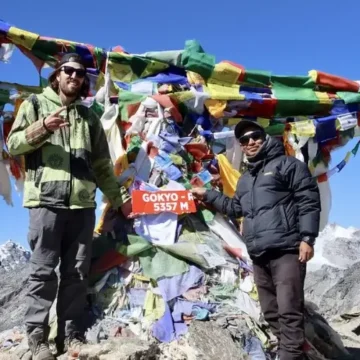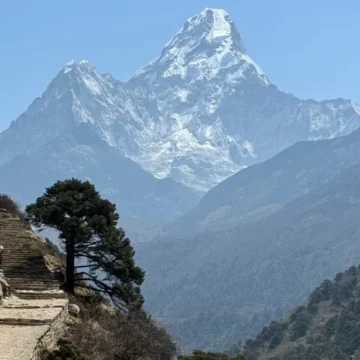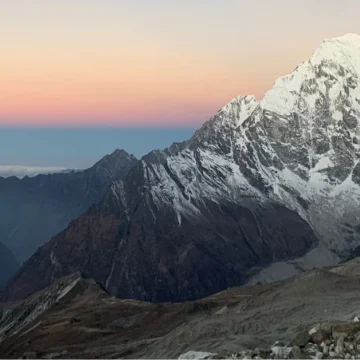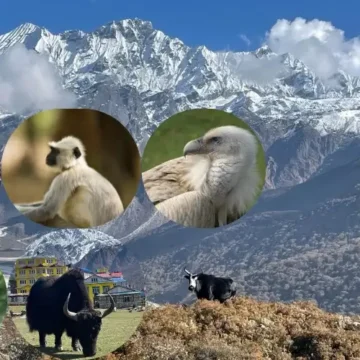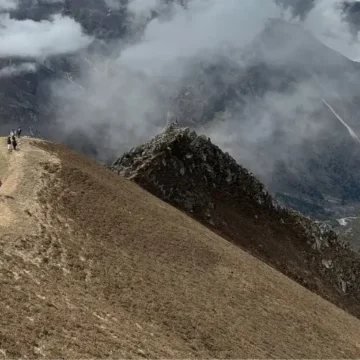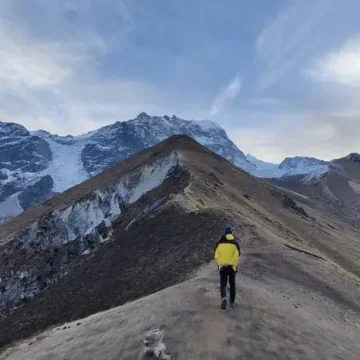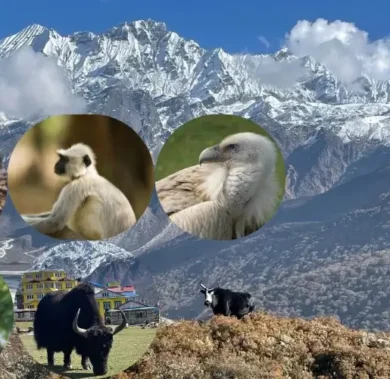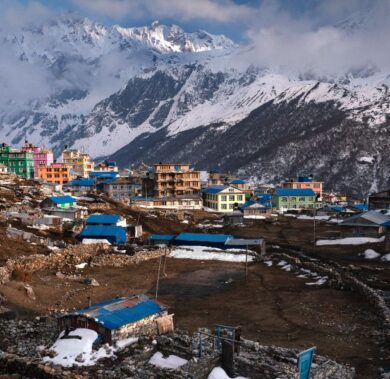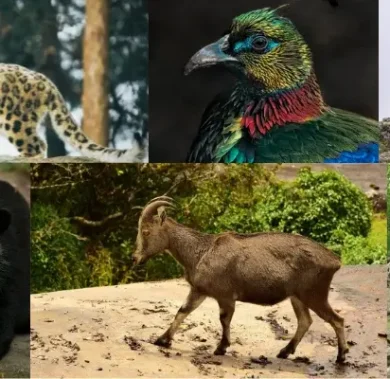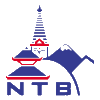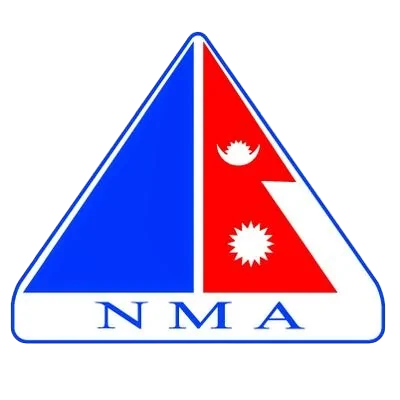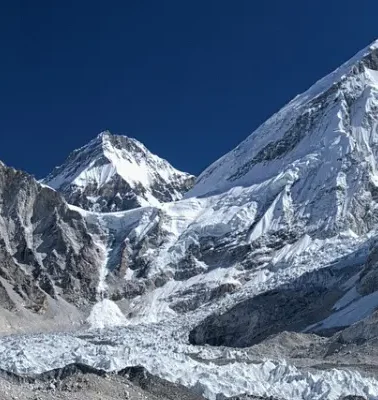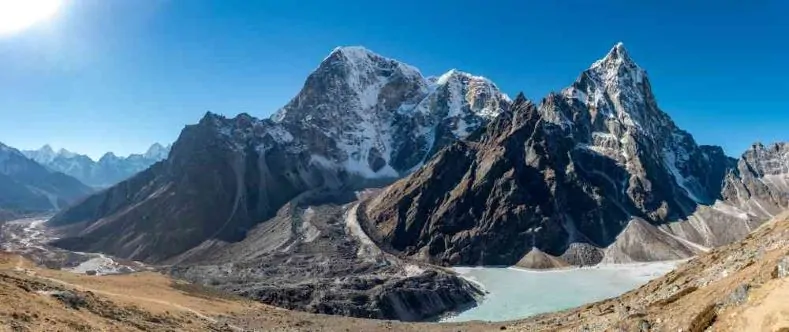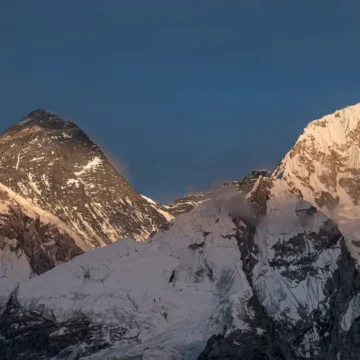
Kyanjin Gompa to Kyanjin Ri or Tserko Ri: Which is Best?
Table of Contents
If you are already in the Langtang Valley or planning to trek, you must have explored the highest peak points on the trek. Kyanjin Ri vs Tserko Ri confused? Don’t worry; we will make the points clear about which one is best for you.
During your Langtang Valley Trek you will have two options for the day hike during the last day of the trek. This is not any compulsory hike but if you have reached such a high altitude when why regret later for not climbing the peaks?
Detailed Comparison Between Kyanjin Ri vs Tserko Ri
| Factor | Kyanjin Ri | Tserko Ri |
| Altitude | Lower Summit: 4400 m/ 14435 ft. and Upper Summit: 4773 m/15659 ft. | Tserko Ri: 4984 m/16352 ft. |
| Time Required | 3–5 hours (Round Trip) | 7–8 hours (Round Trip) |
| Trail Difficulty | Moderate (steep but short) | Challenging (long, steep, high altitude) |
| Trail Type | Steep uphill, rocky trail | Starts flat, then steep and rugged |
| Distance (Round Trip) | 5.5- 6 km/3.4-3.7 miles | 10–11 km/8.2-6.8 miles |
| Views | Close-up of Langtang Lirung, Langshisha Ri | Wide 360° panorama, includes Shishapangma |
| View Type | Mountain close-ups, glaciers | Panoramic, wider Himalayan range |
| Best For | Short acclimatization hike | Experienced hikers seeking adventure |
| Wildlife/Flora | Some mountain birds and alpine shrubs | More wildlife sightings, yaks, alpine flora |
| Recommended For | All trekkers, including beginners | Well-acclimatized trekkers with stamina |
| Best Time to Hike | Early morning (to avoid wind/clouds) | Very early morning (starts before 5 AM) |
| Considerable | Can do in Winter too | Very Difficult during Winter |
Kyanjin Gompa to Kyanjin Ri Hike – Full-Day Itinerary and Trail Details
Going from Kyanjin Gompa to Kyanjin Ri is one of the Langtang Valley Trek’s best and most rewarding parts. This hike begins from Kyanjin Gompa, located 3,870 meters/12,697 ft. above sea level.
Although the path to Kyanjin Ri is visible, it is also very steep. The views from trekking trails around Lower Kyanjin Ri (about 4,400 meters) are excellent, and Upper Kyanjin Ri lets you walk above 4773 meters above sea level.
Hiking to the Kyanjin Ri summit and back takes you about 4 to 5 hours. Getting to the top takes around 2 to 3 hours and returning takes about 1.5 to 2 hours.
People start climbing the mountain early, at 5:30 or 6:00 AM, to experience the best weather conditions. Sometimes, by noon, the clouds keep you from seeing anything and at the same time, the wind gets heavier, slowing your progress.
At first, the hiking path goes over yak grazing lands and along rocky roads. The walk is easy here; you’ll find mountain flowers, some shrubs and lovely views of the valley.
There are sections of the trail that are steep and full of rocks. The gravel makes this area unstable and uneven, so watch where you put your feet.
The end section of the hike is the most testing. Reaching the top is tough, and a high altitude usually makes breathing difficult. The effort you put in to get to the top is repaid by the incredible sight you see.
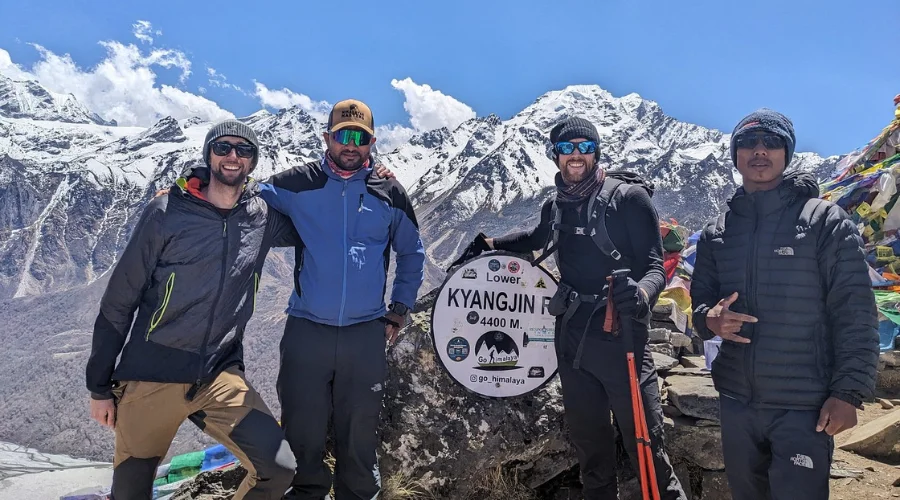
At the summit of Kyanjin Ri, you will enjoy some of the finest views of the Langtang Himalayas. You’ll be able to see Langtang Lirung, Dorje Lakpa, and Yala Peak, as well as a variety of other snow-covered mountains.
You’ll also see the Langtang glacier far below. On a clear day, the view feels endless. Along the way, you may spot Himalayan Thar or mountain birds, and if you’re lucky, you might catch a glimpse of a red panda in the forest area near Kyanjin Gompa.
Most people return to Kyanjin Gompa for lunch after the hike. Many teahouses serve hot Nepali meals, tea, and snacks. It’s a good idea to carry snacks and water for the hike, as there are no tea shops on the trail to Kyanjin Ri itself.
You should also pack warm clothes, gloves, a windproof jacket, sunscreen, and sunglasses. Trekking poles are helpful, especially on the downhill section, as the trail can be slippery.
Know More About Langtang Trek Packing List
Kyanjin Gompa to Tserko Ri Hike – Full-Day Itinerary and Trail Overview
Hiking from Kyanjin Gompa to Tserko Ri is a popular and satisfying adventure in Langtang. You can see the Langtang Valley from Tserko Ri, which sits around 4984 meters above sea level and has the best views in the area.
Since the hike to Tserko Ri is tougher than Kyanjin Ri, getting up around 4:30 or 5:00 AM is essential. It lets you miss the uncomfortable wind in the middle of the day and still see the clear views from the top.
At first, the trail was not challenging to walk on. First, you’ll walk through flat yak pastures and see groups of grazing yaks in the sunrise.
Once you’ve walked a while, you’ll notice that the trail is steeper in places, and you start to feel the effects of the high altitude.
Moving from the first to the middle section, the path becomes slippery and filled with loose rocks. In winter, stray patches of ice are possible.
The final part is the hardest because the thinner air makes everything you do on the mountain seem slow and exhausting. Going steadily because you’ll gain more than 1,000 meters in elevation from Kyanjin Gompa.
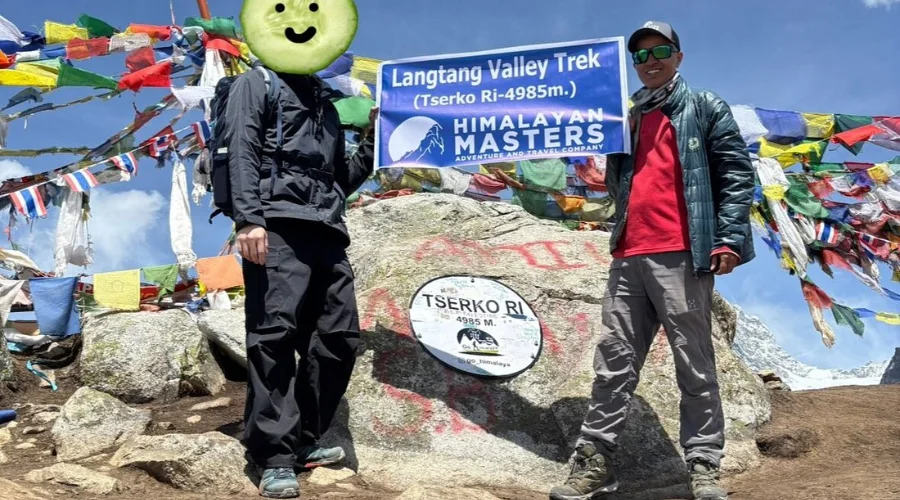
The views you get from Tserko Ri are worth seeing. You can see snow-capped mountains everywhere, such as Langtang Lirung, Shishapangma in Tibet, Dorje Lakpa, Yala Peak.
You won’t find a more complete view of the Langtang region than what’s offered here.
On the trial, like Himalayan Thar, you might observe birds and animals comfortable at high altitudes. The region’s parks are known for their lovely alpine plants and blooms in the spring months.
As teahouses are rare throughout the hike, you should bring water and some snacks and keep your clothes warm.
The wind comes up forcefully by late morning, so bringing a windproof jacket, gloves, and sunglasses is very important. Because the climate shifts fast at heights like this, dress in layers.
Going all the way to the top takes about 4 hours and 3 hours to get back down. Downhill parts of the ride seem to go faster but may put strain on your knees because of the uneven terrain.
It’s much easier with trekking poles in these areas. After completing the trek, most people head to a teahouse in Kyanjin Gompa to take a break with lunch and something hot to drink.
So, climbing to Tserko Ri requires being physically fit because the route is challenging. People should acclimate for a day or two before trying the hike from Kyanjin Gompa.
Know More About Food and Accommodation in Langtang Trek
Which Viewpoint Is Right for You?
You might have discovered a lot between Kyanjin Ri vs Tserko Ri till now. Kyanjin Ri is a straightforward climb with incredible views of Langtang Lirung and other nearby peaks for those in a rush or not yet used to high altitudes. It’s great for those who enjoy early morning treks but not challenging hikes.
However, if you feel comfortable at a high altitude and want something big, climbing Tserko Ri can be very rewarding in more ways than one and gives fantastic views of the mountains, too.
Can’t Decide Yet? Do Both!
Going on both hikes is a rewarding experience when you have the opportunity. On your first acclimatization day, hike Kyanjin Ri well, then take Tserko Ri the following day.
So, as a result, you can learn about the region from different angles and gain more enjoyment during your time at Kyanjin Gompa.
Himalayan Masters organizes a really great adventure to Langtang Valley Trek. We extend the trek by hiking to Tserko Ri as per our itinerary. If you are willing to do Kyanjin Ri or both peaks then please feel free to contact us.
If you still have any confusion regarding climbing these peaks then don’t worry, Himalayan Masters will handle with care for you. You can just leave a comment below or email us at: [email protected].
Want to know more?
Speak to an Expert





Sandip Dhungana
Nepal 🇳🇵
Whatsapp: +977-9823636377

